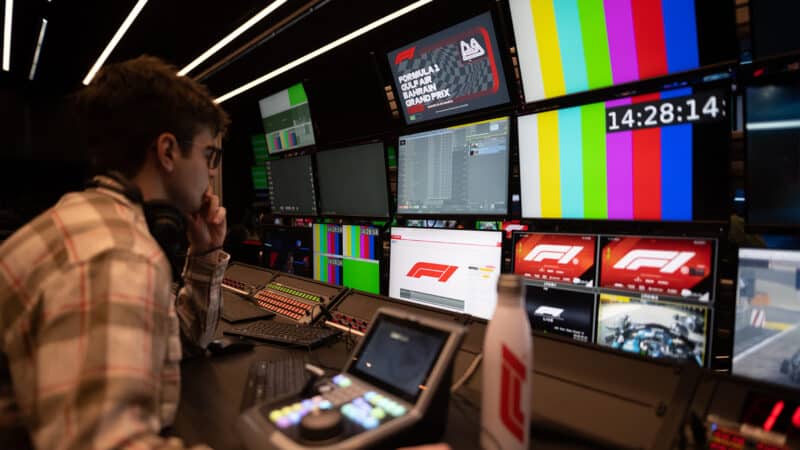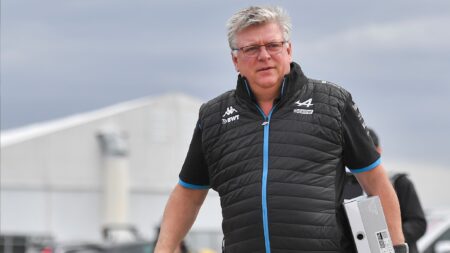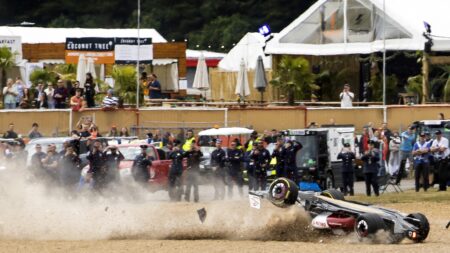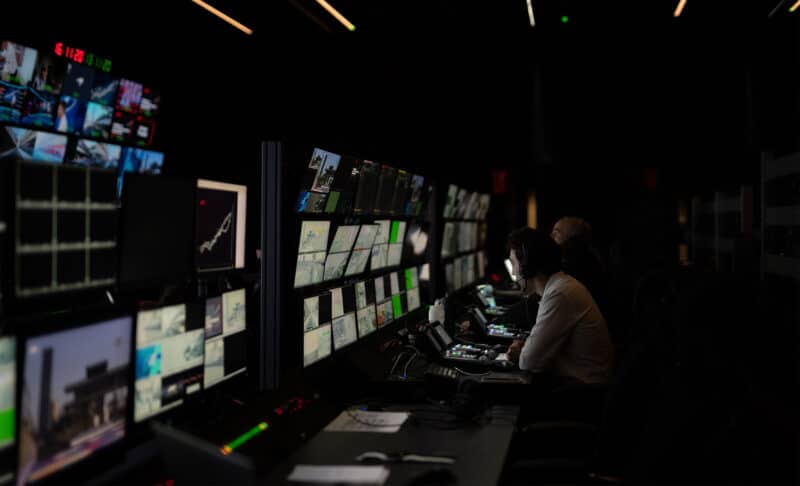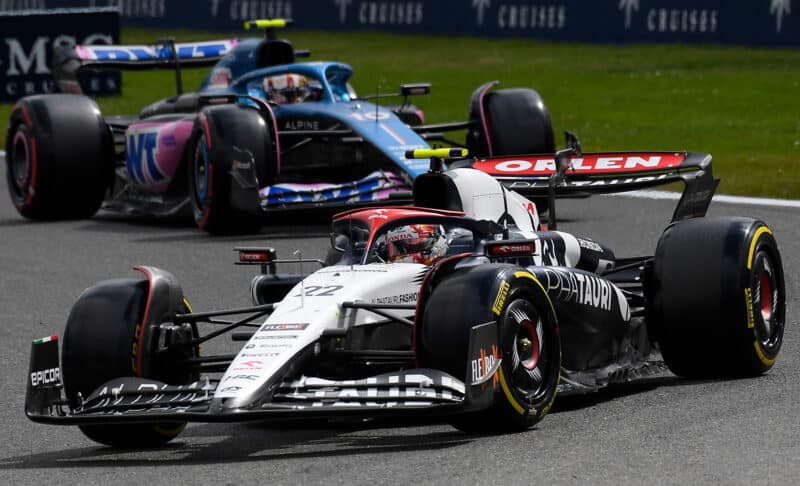Biggin Hill might well be a name you have heard before, as the airport — perfect for private flights in the past — has long been the location of another F1 facility. But that facility has been evolving at some pace in the past 12 months.
Now named the Media and Technology Centre (M&TC), Biggin’s playing a far bigger role than it ever has in bringing F1 to the world. And along with quite a few other media and rights-holders, I got a look inside the refurbished broadcast home that acts as a hosting venue, broadcast campus, office space, storage facility and even an F1 team-esque research and development laboratory.
Driving past a timber merchants and turning right at a mini roundabout flanked by a few bungalows doesn’t scream elite sport, and even once you set eyes on the actual building, walking into reception, you’d struggle to believe this is the place where F1 footage is curated and distributed from, reaching 180 territories around the world.
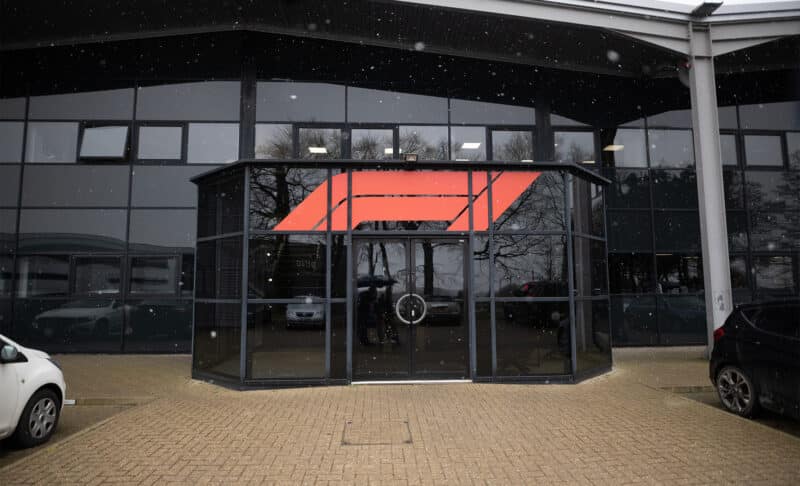
The F1 logo the only clue to what’s actually going on inside…
Jacob Niblett/Shutterstock Studios
Once inside, though, you start to get the picture of the facility that was all rebuilt at remarkable speed following the end of last year’s Abu Dhabi Grand Prix, to be ready for the new season.
A huge central hub that acts as a hosting space — complete with a scale 2022 car — is the first room that you reach, but it’s what’s beyond it, visible through the glass, that is a remarkable sight.
The full gallery is absolutely enormous. From here, the world feed director — providing the pictures that every broadcaster takes from five minutes before each session starts — has countless screens to deal with and choose from, and that’s only the front-left corner of the room. F1TV — the series’ streaming service — takes up the other side, with seemingly-endless banks of desks and screens to clip up replays and packages, offering highlights and working in support of the broadcasts.
Even to simplify it to that level does it a disservice, given we’re talking about a 140-strong team working at the M&TC during a race weekend. And that’s on top of the 75 staff that are on-site in the slimmed-down Event Technology Centre (ETC) that connects the at-track footage with the main broadcast set-up at Biggin.
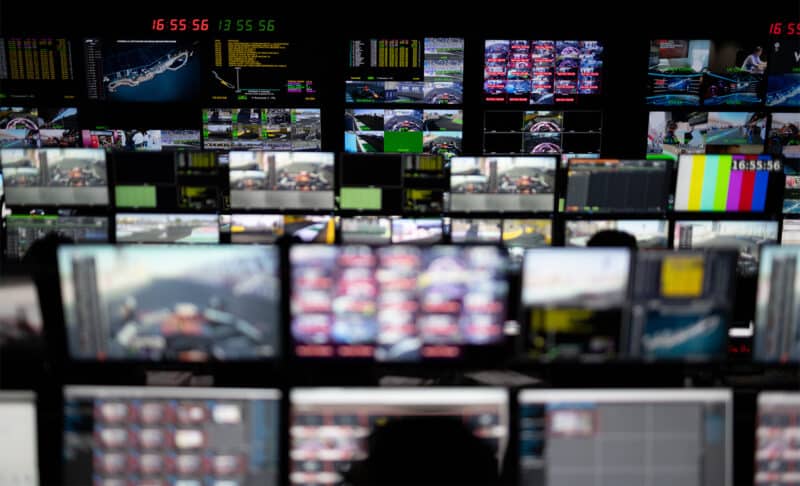
Making F1 tick takes a seriously impressive facility
Jacob Niblett/Shutterstock Studios
Since the Covid pandemic but also with an eye on sustainability, more and more of the tasks have moved to the M&TC to reduce travel, with data and video beamed between the track and the permanent facility via two dedicated fibre pipelines, allowing for 10GB of bandwidth. That’s needed, because there’s 500TB of data transferred each race; 50 times the amount the Hubble space telescope produces in a year.
